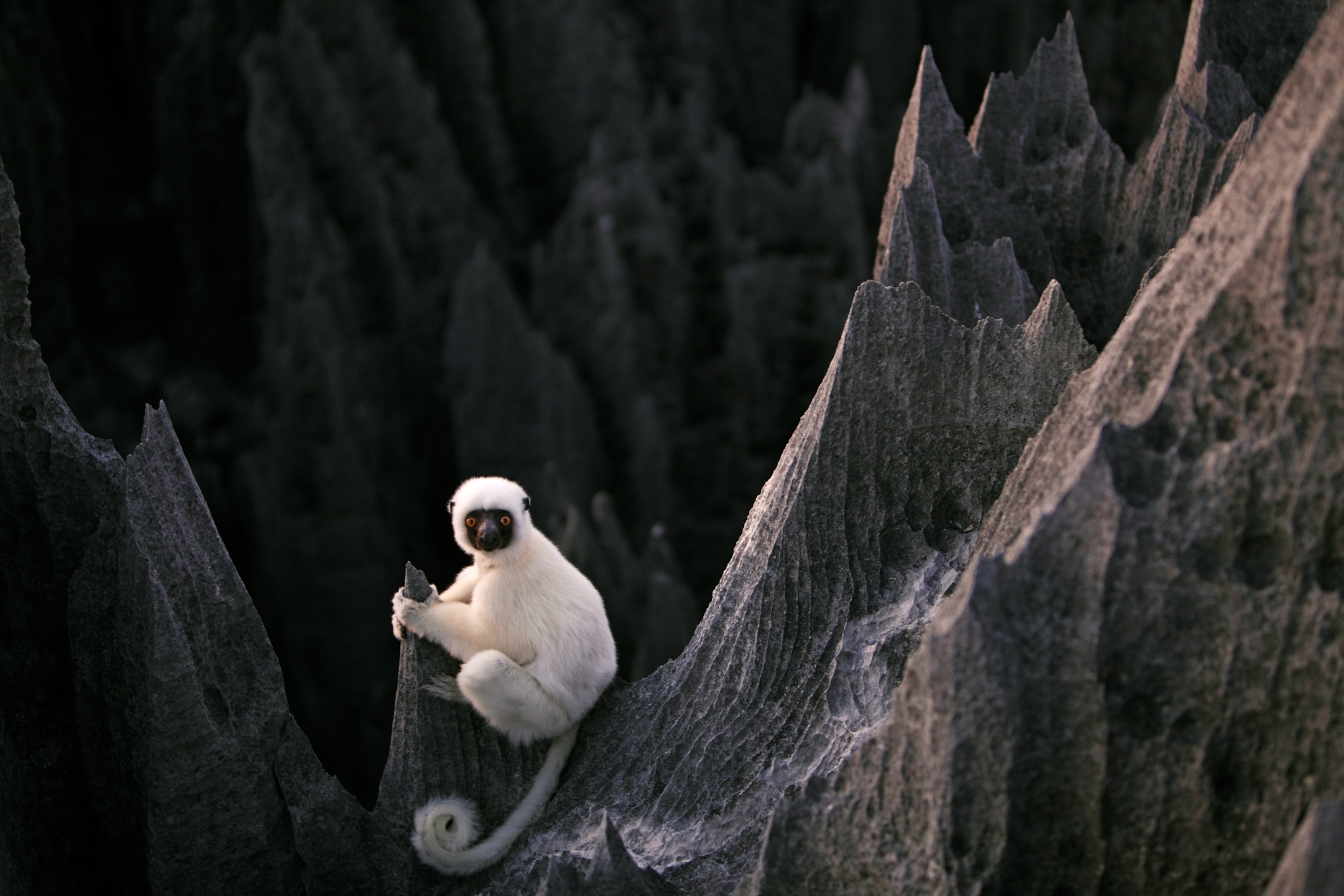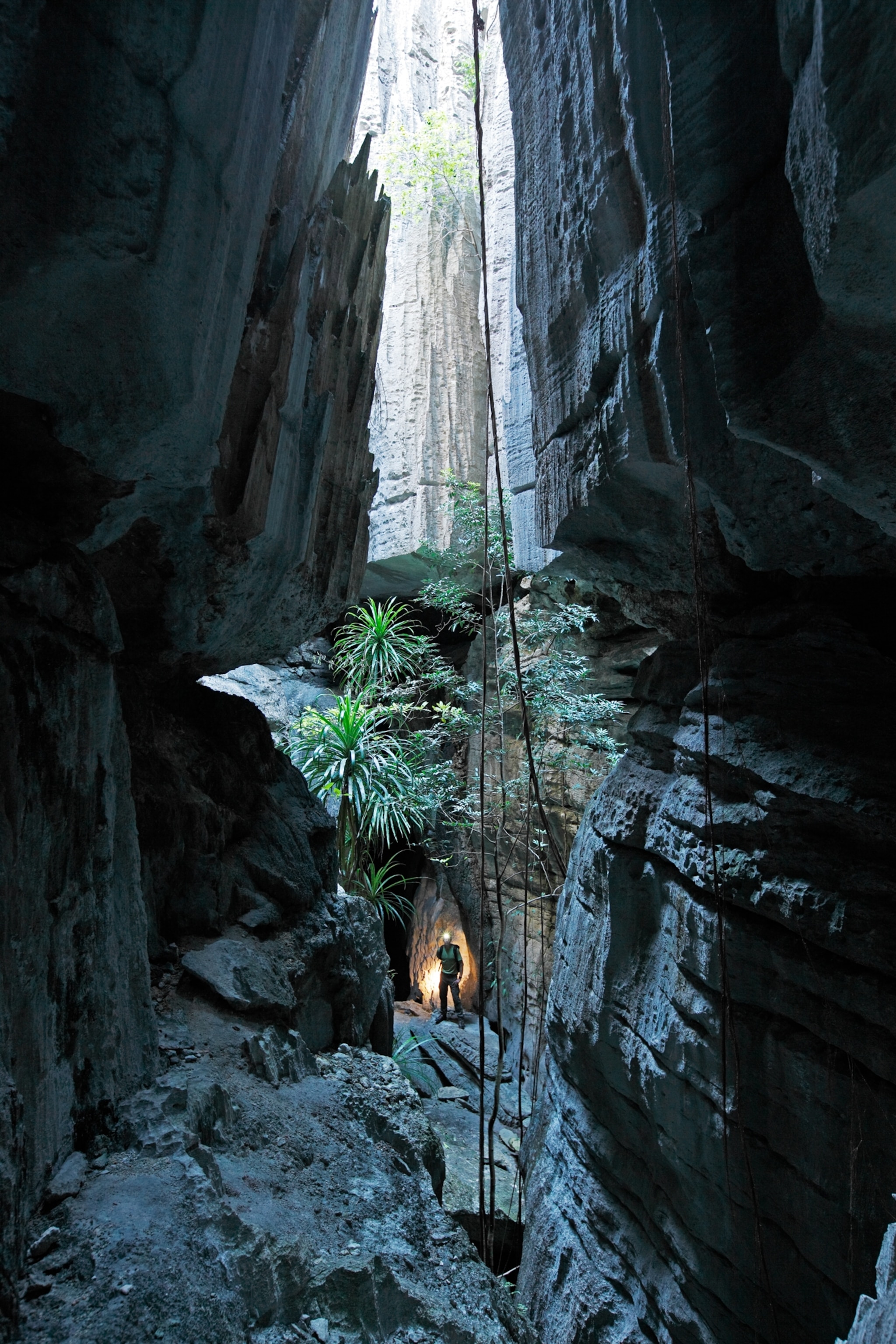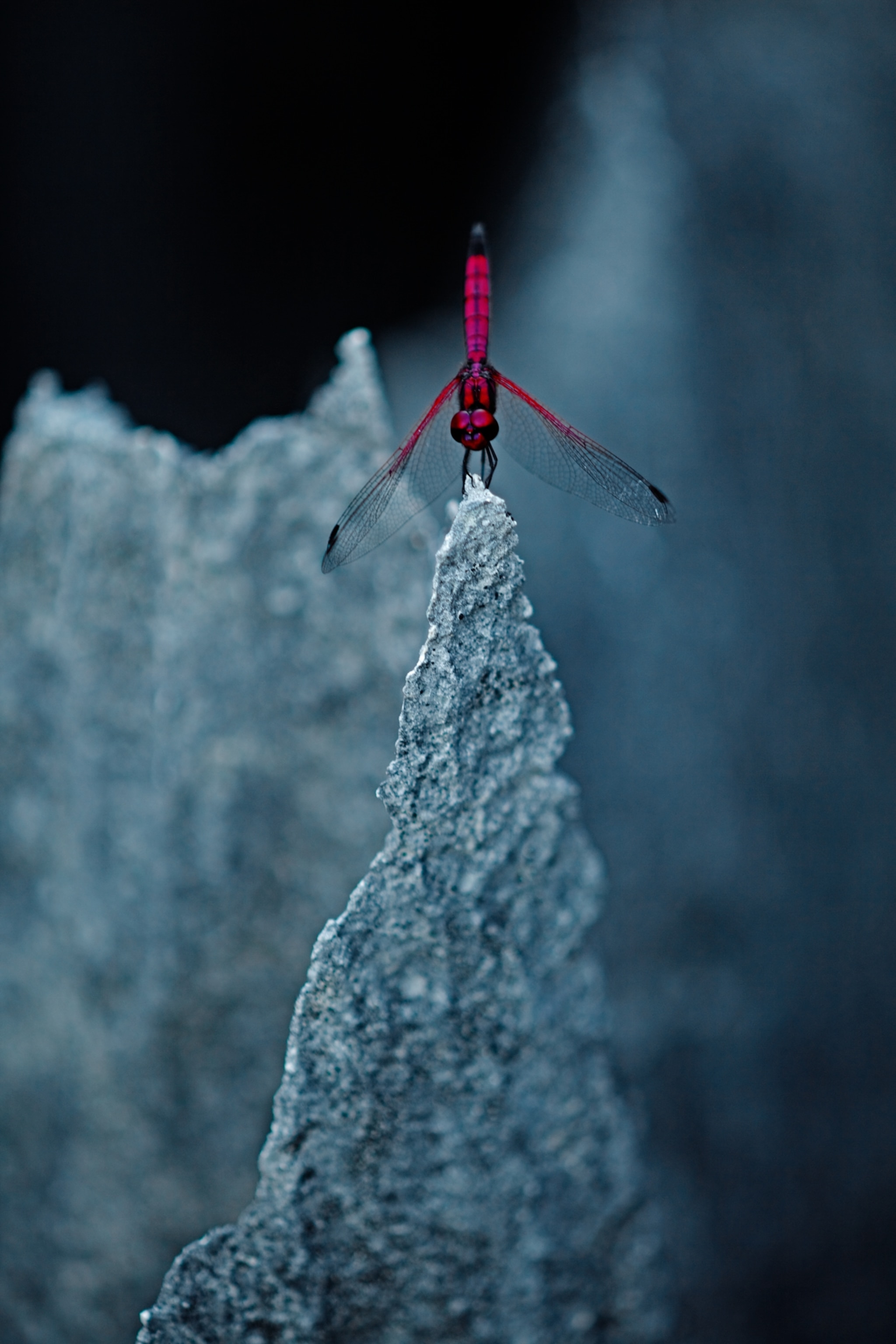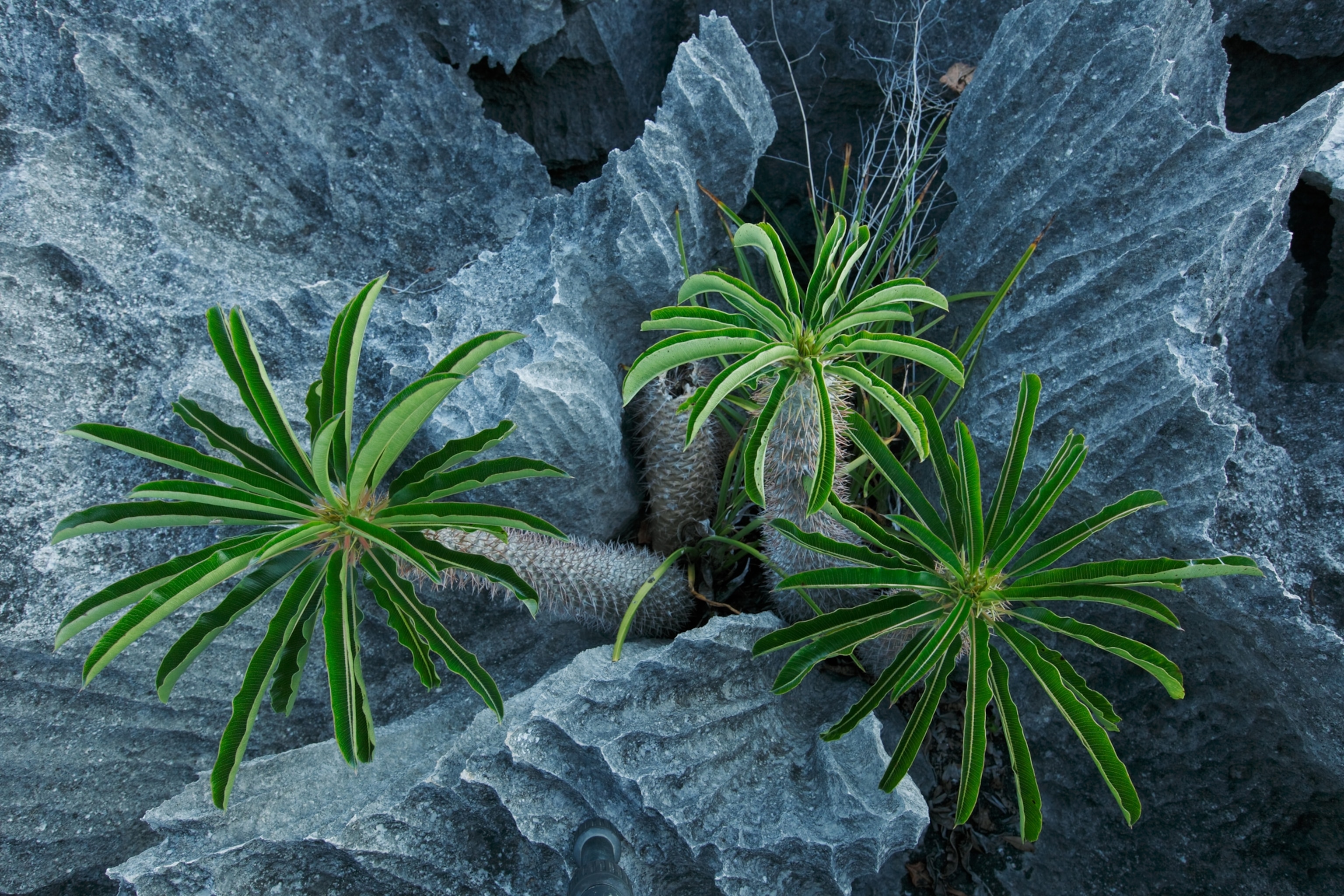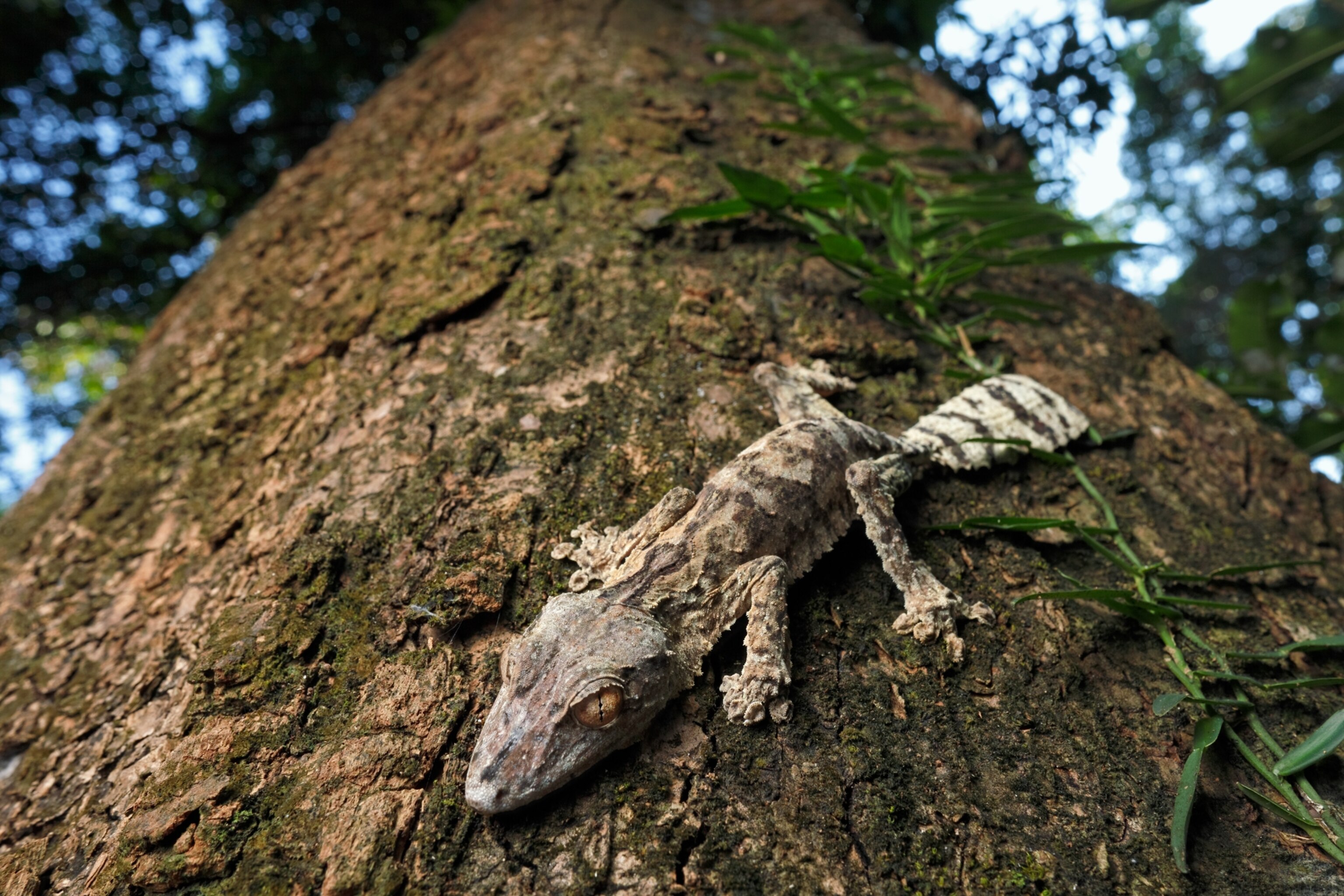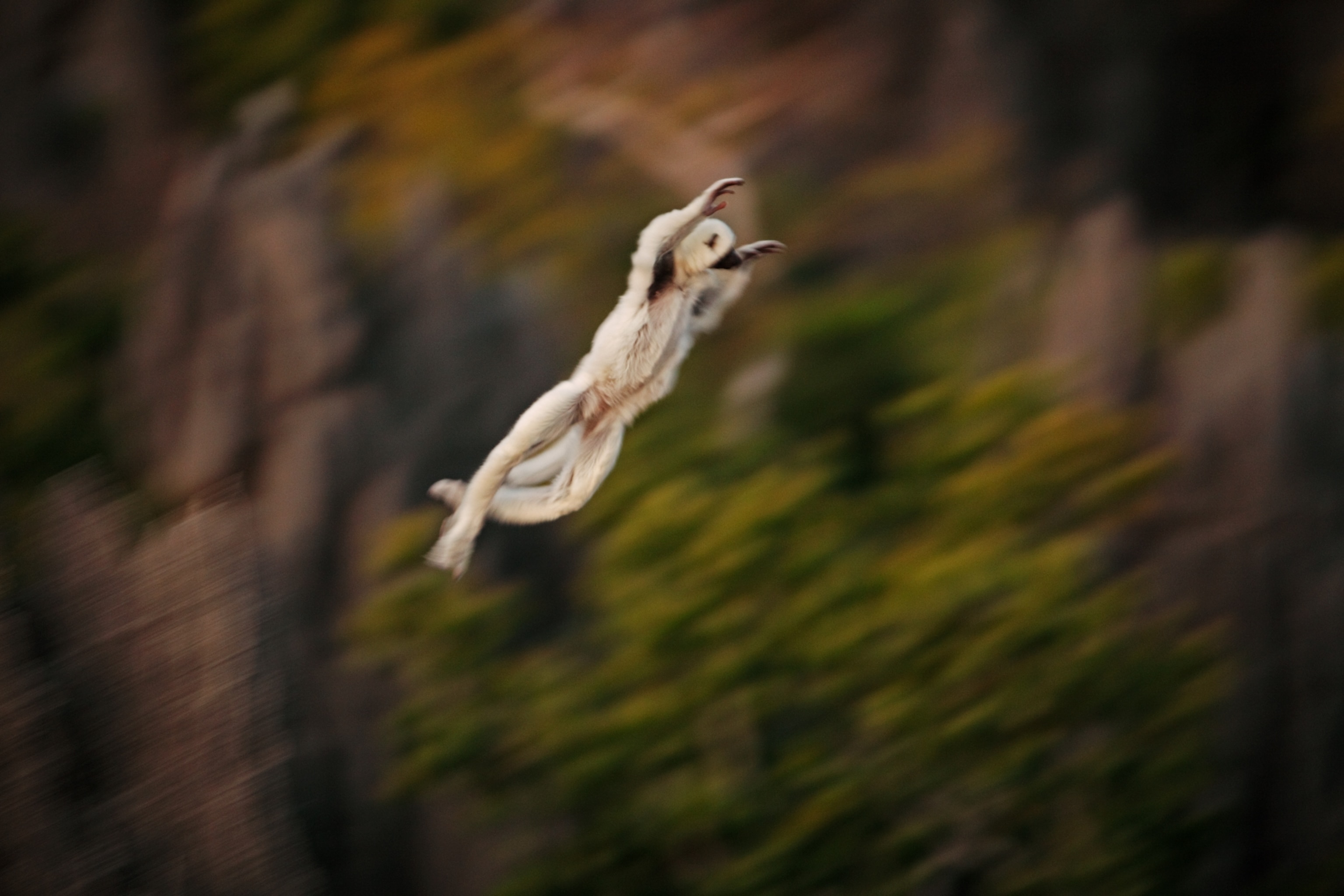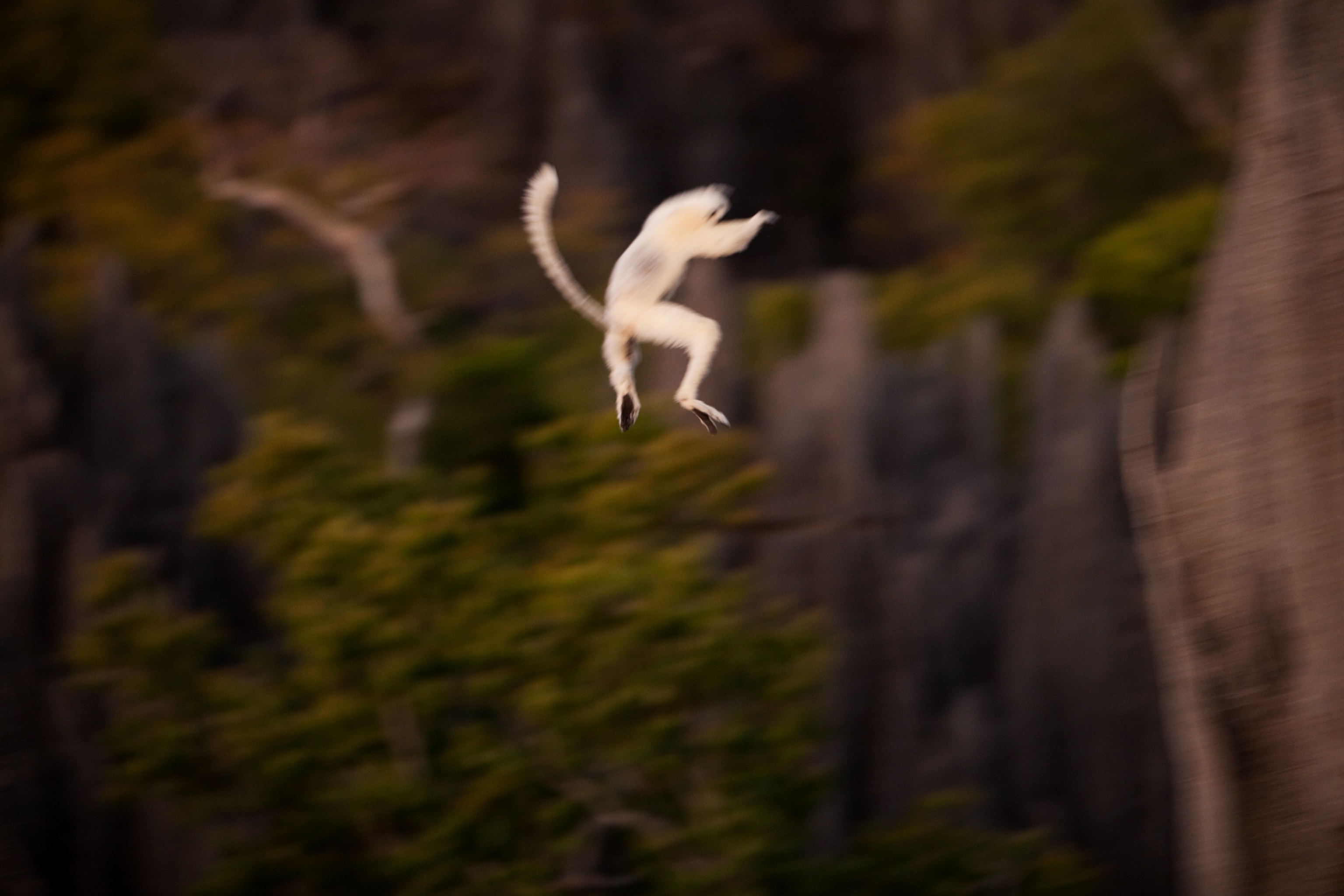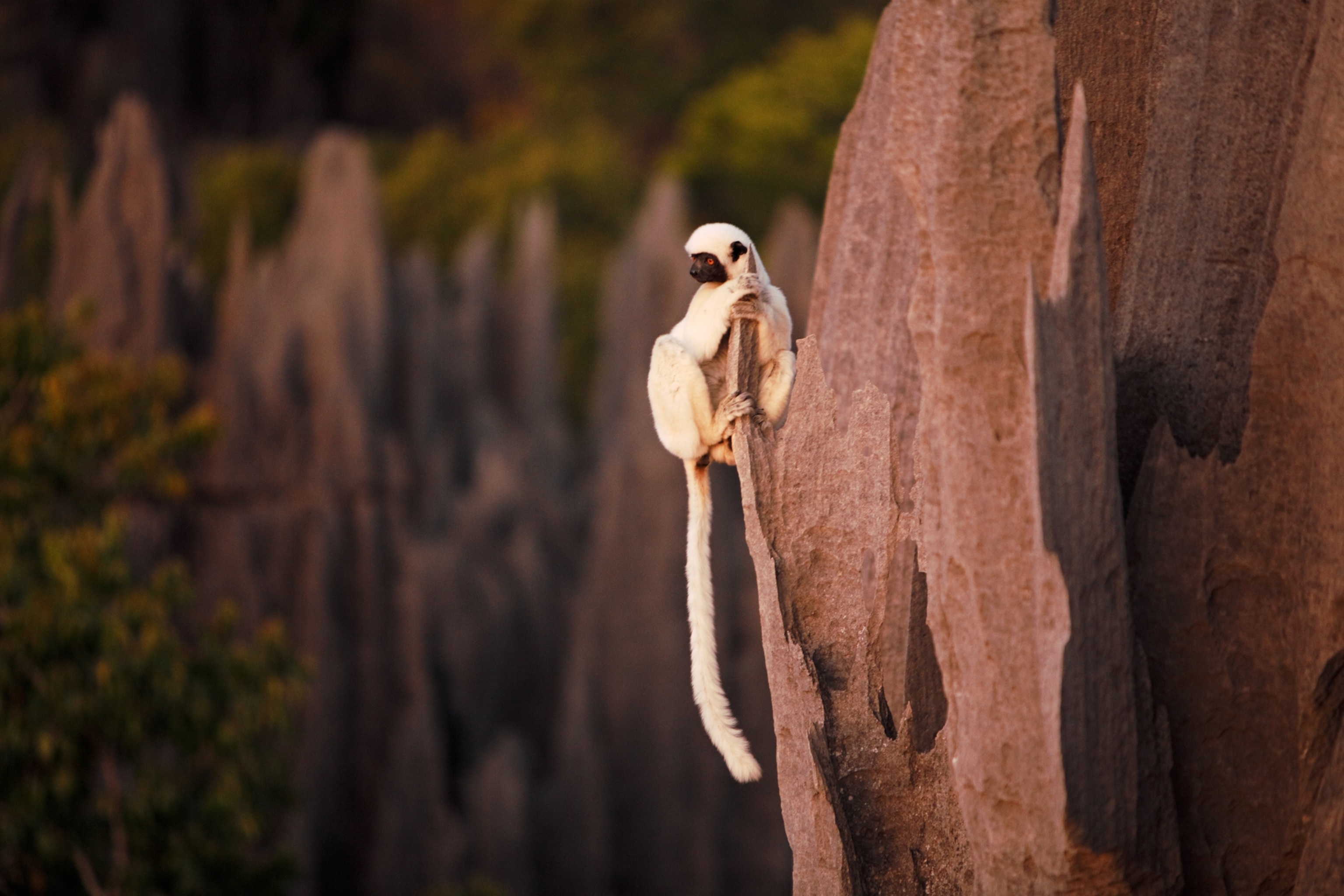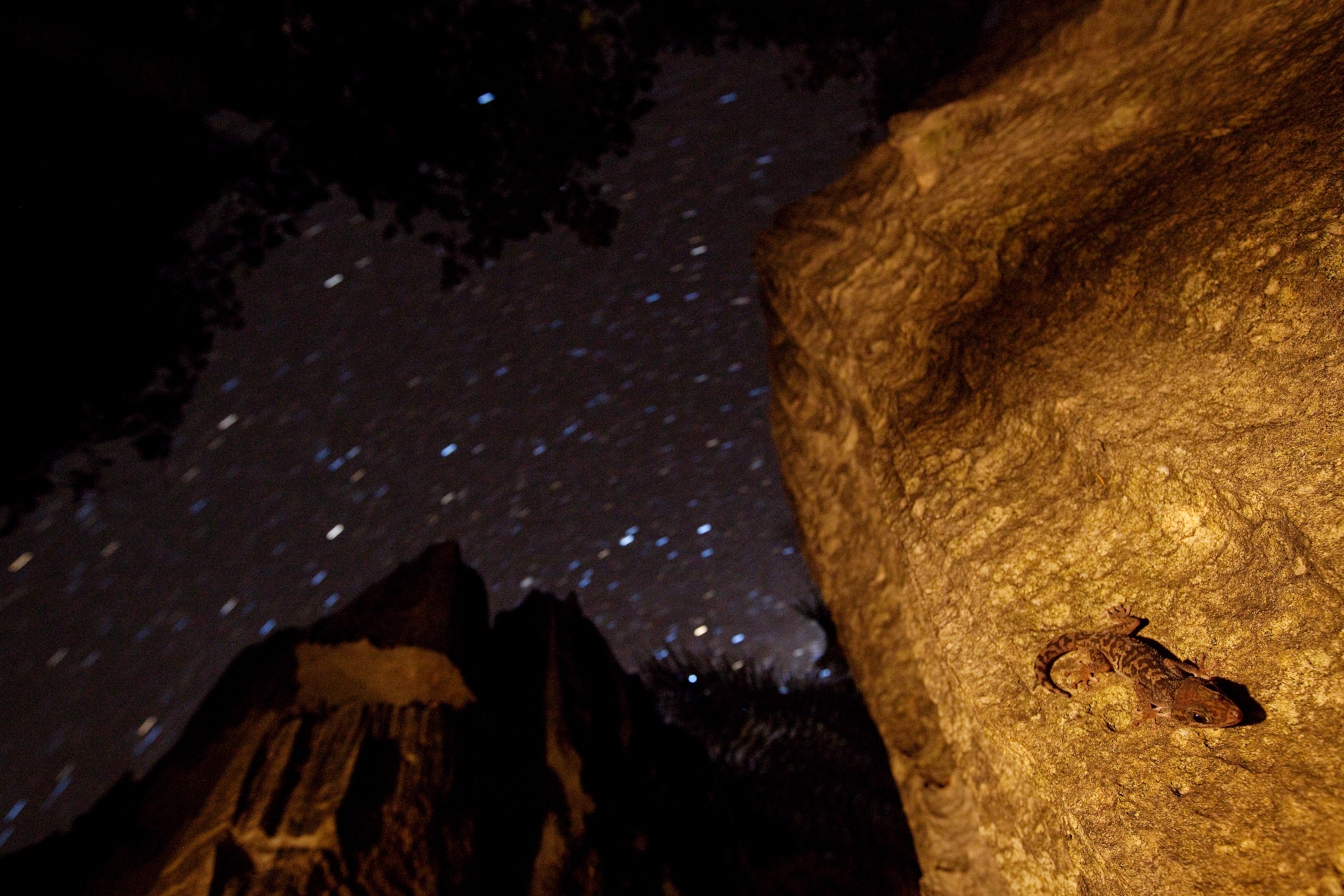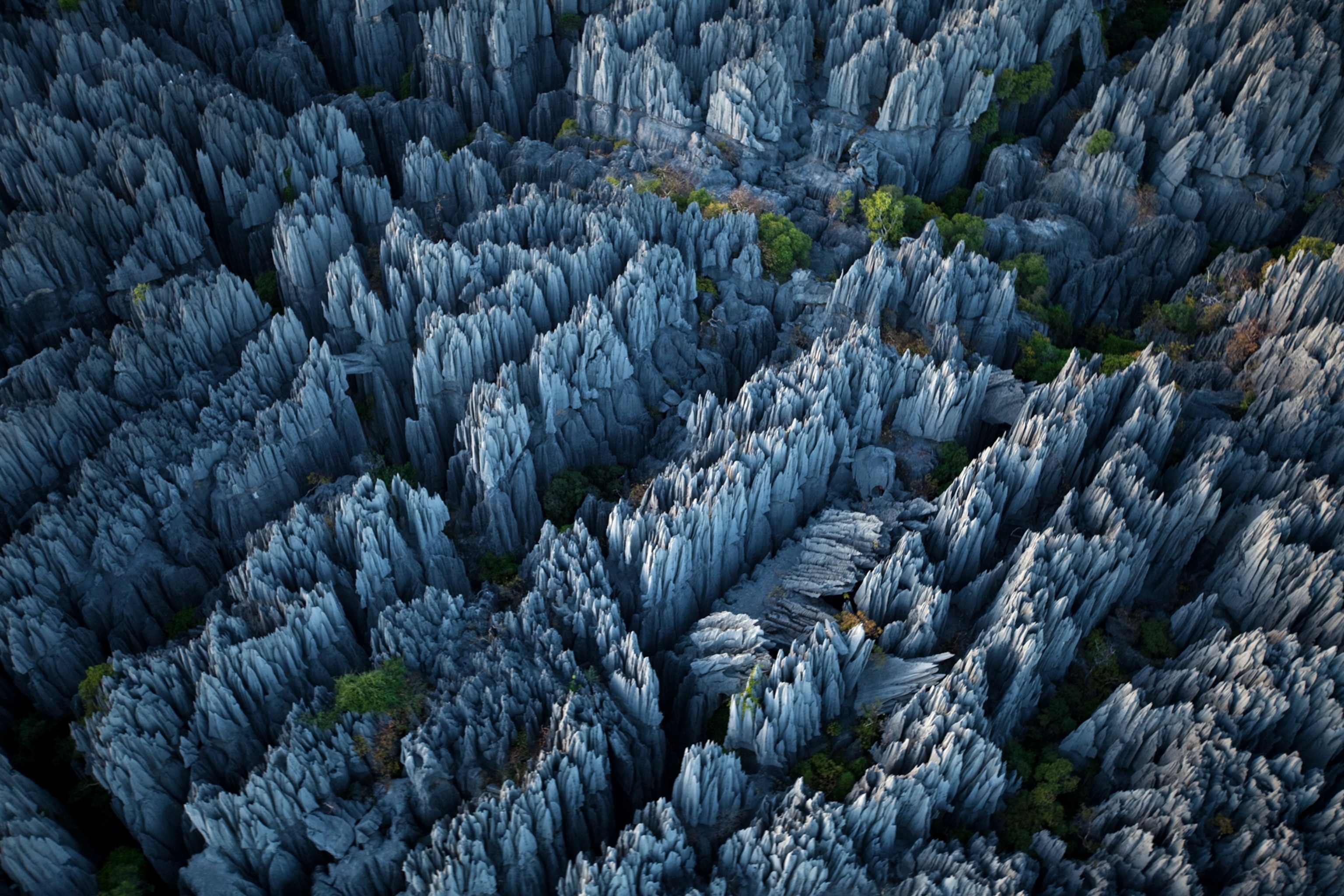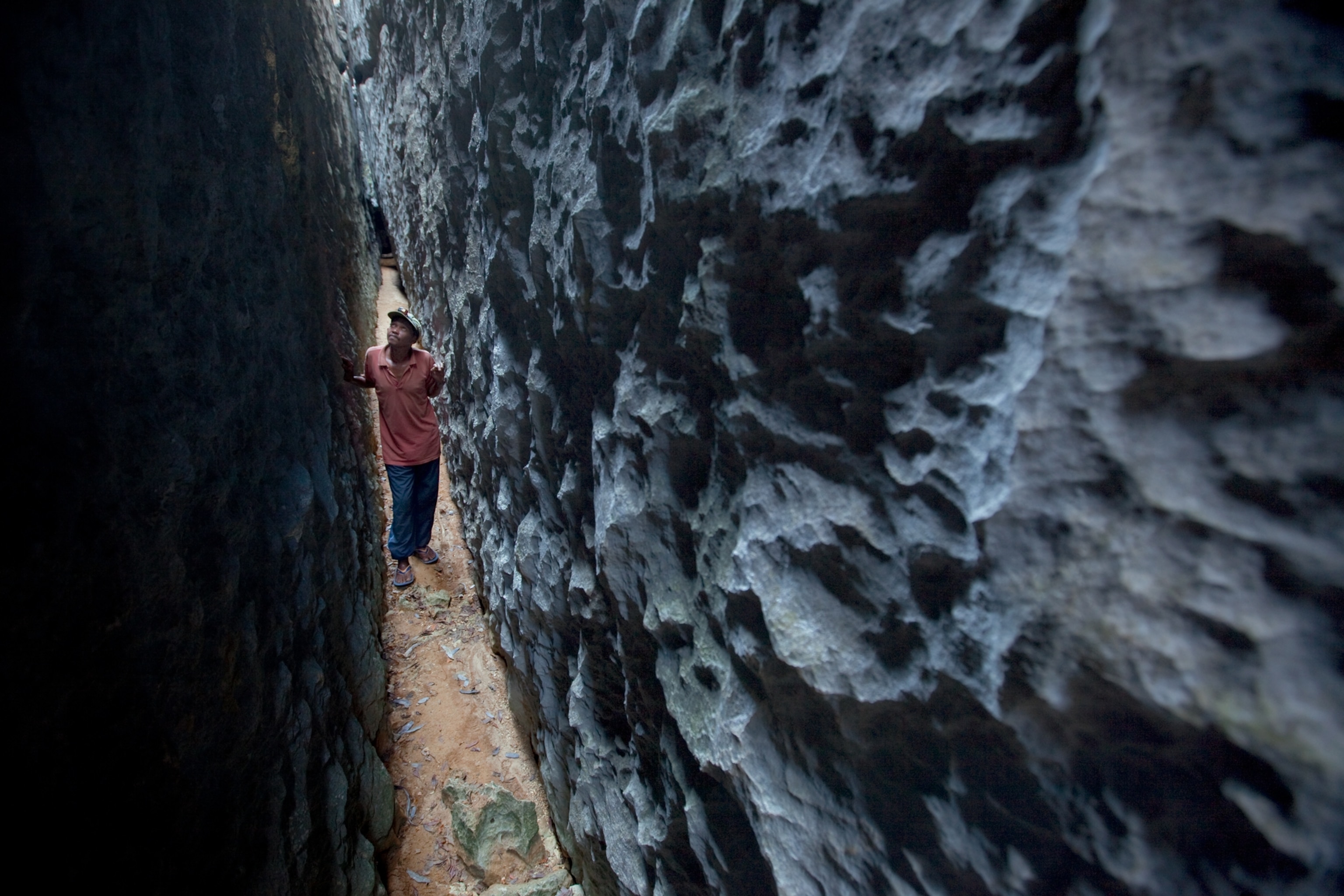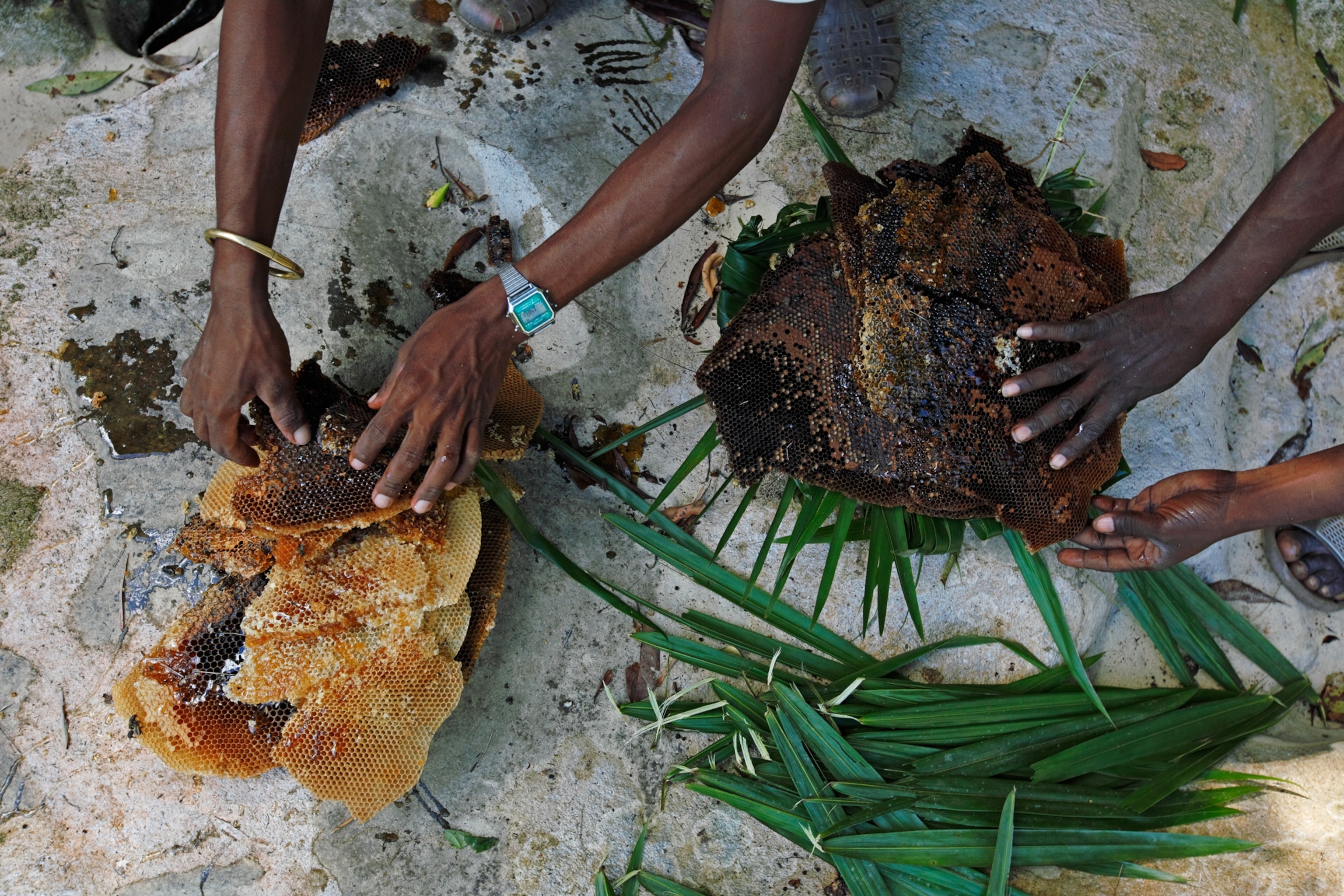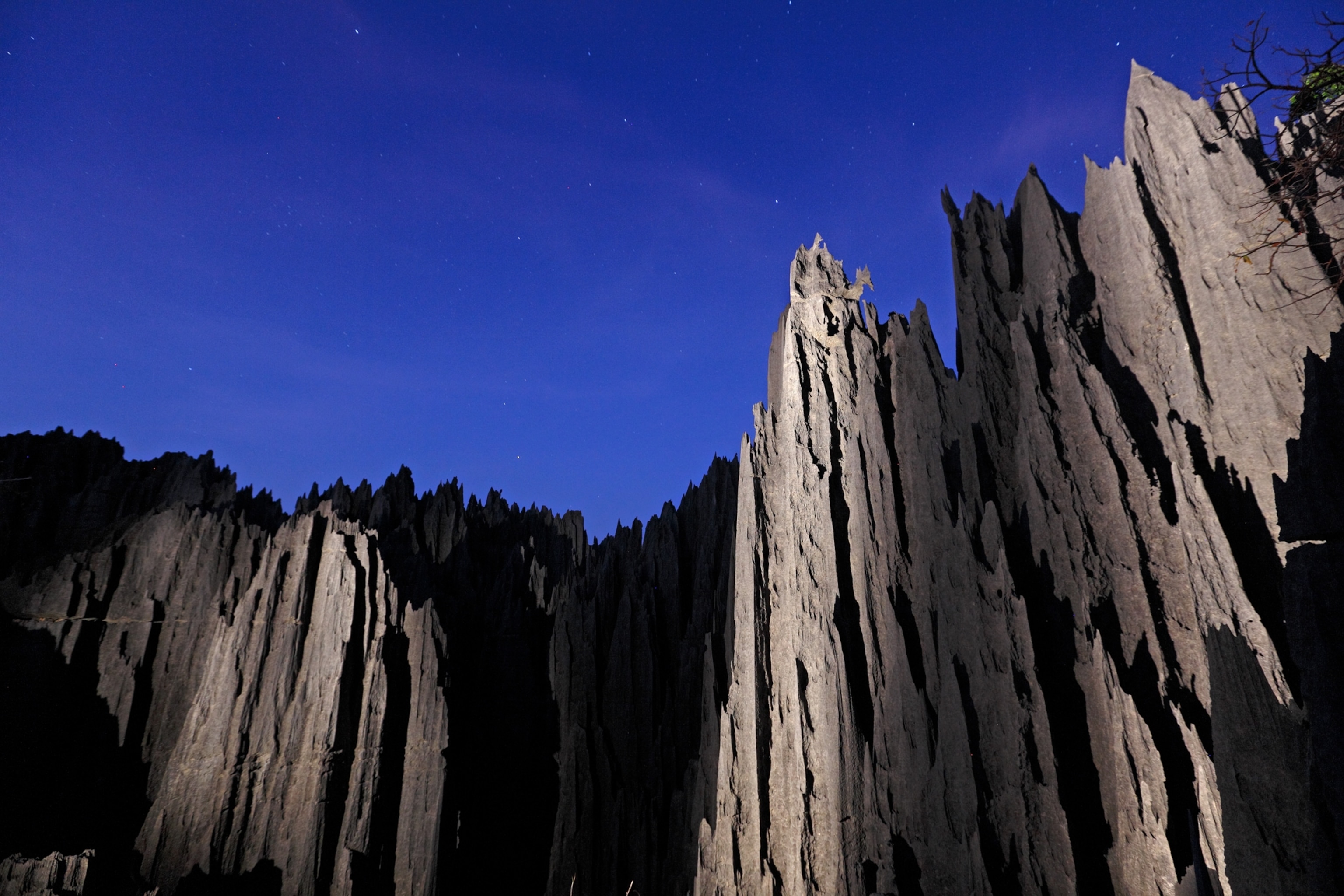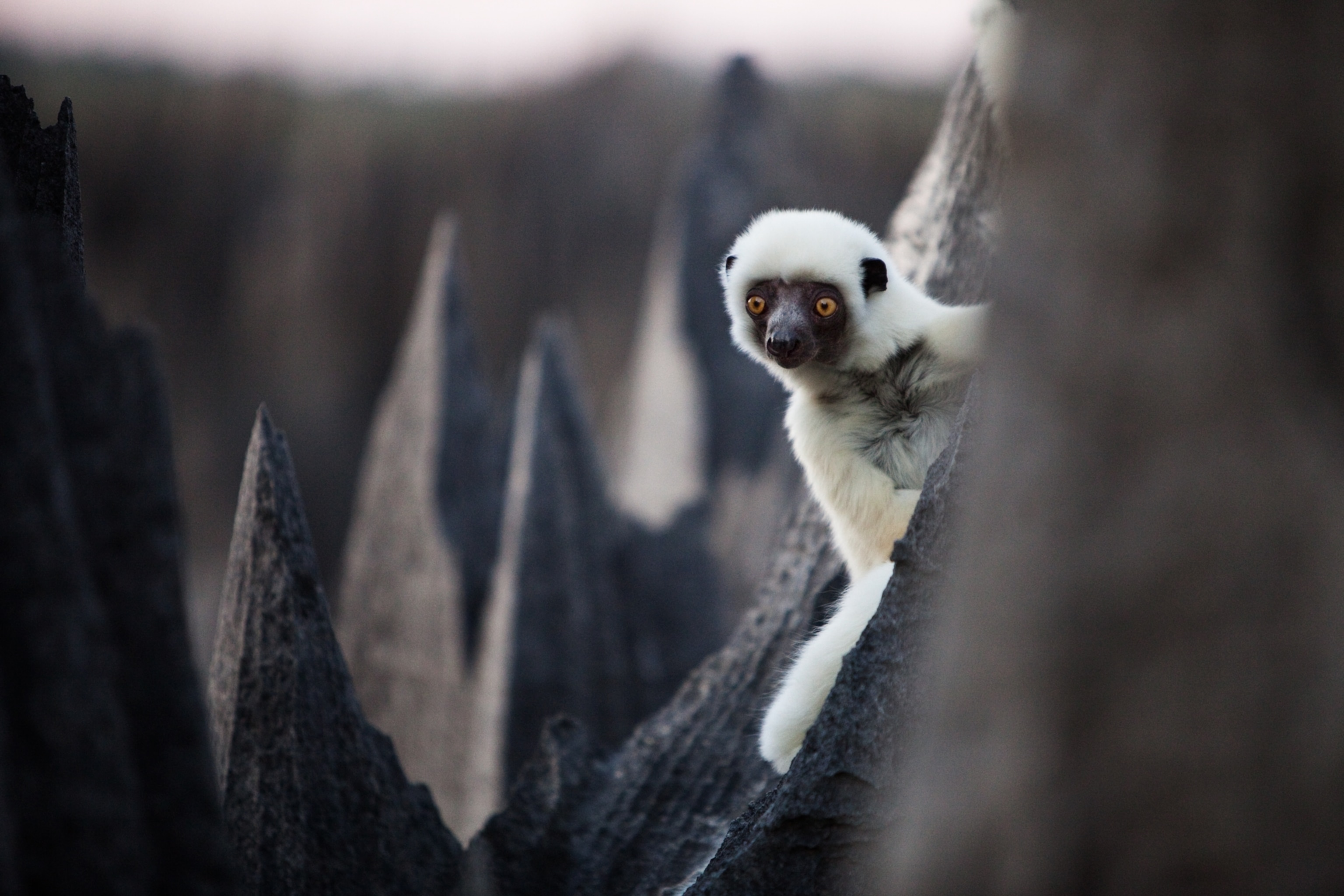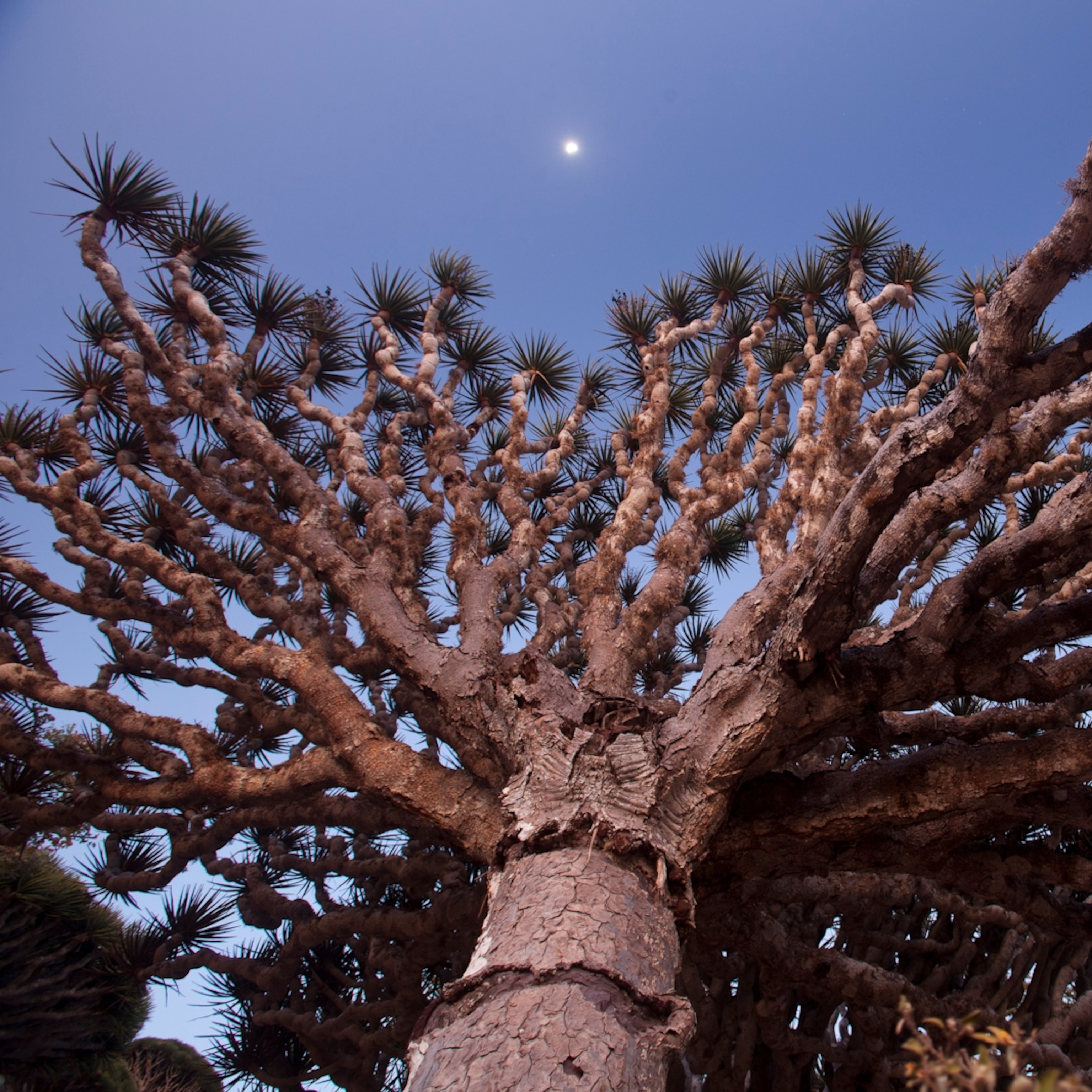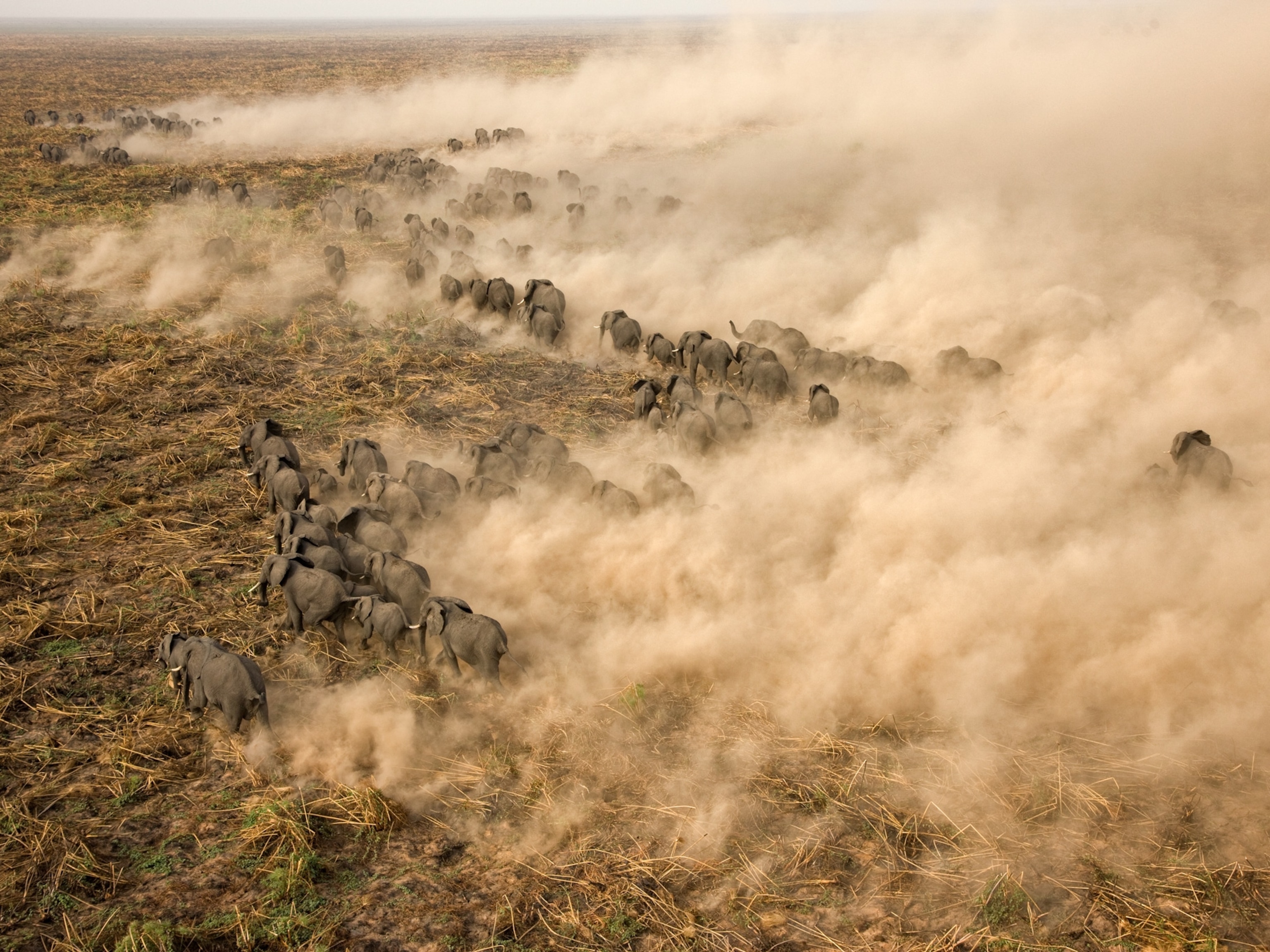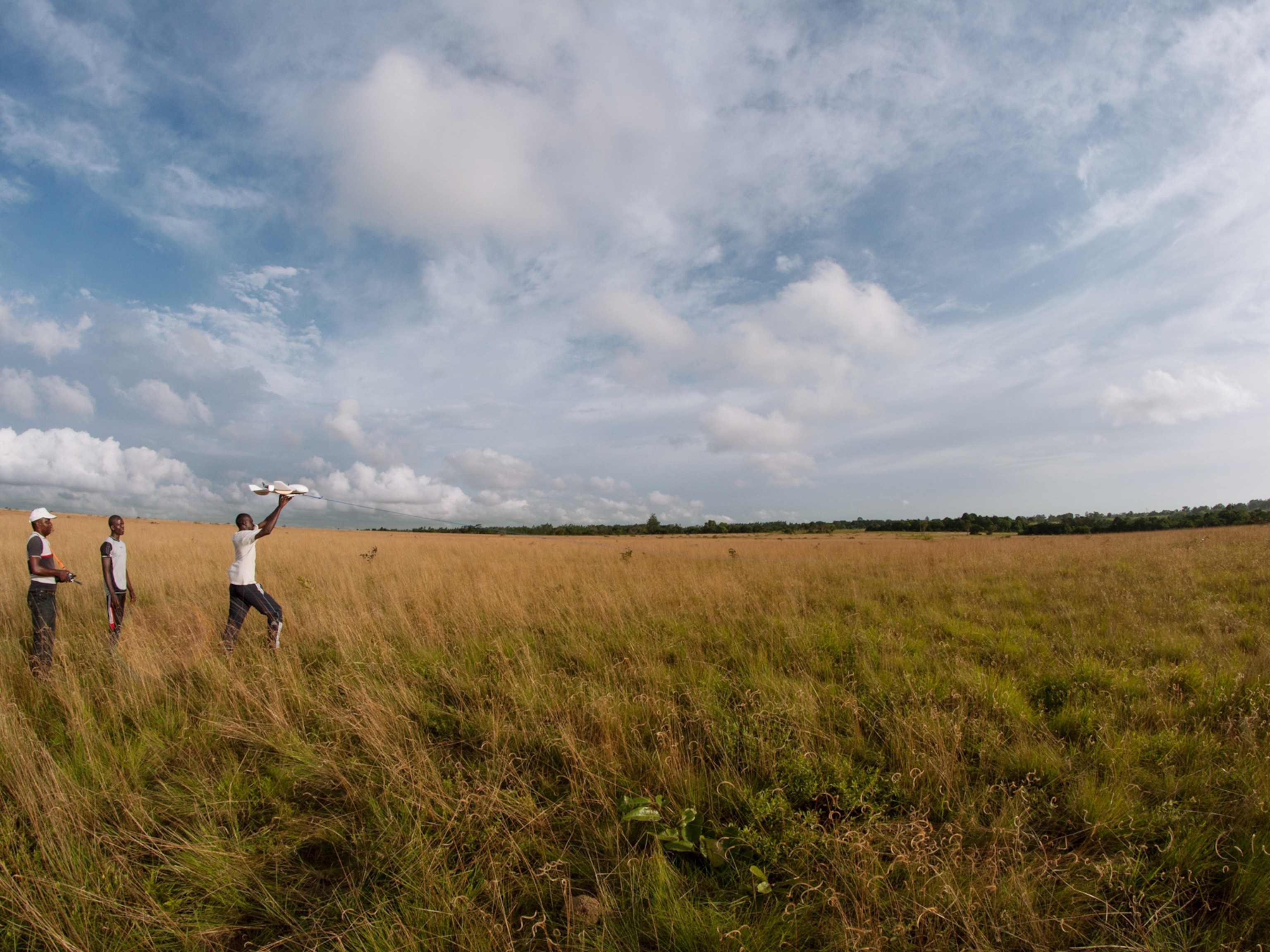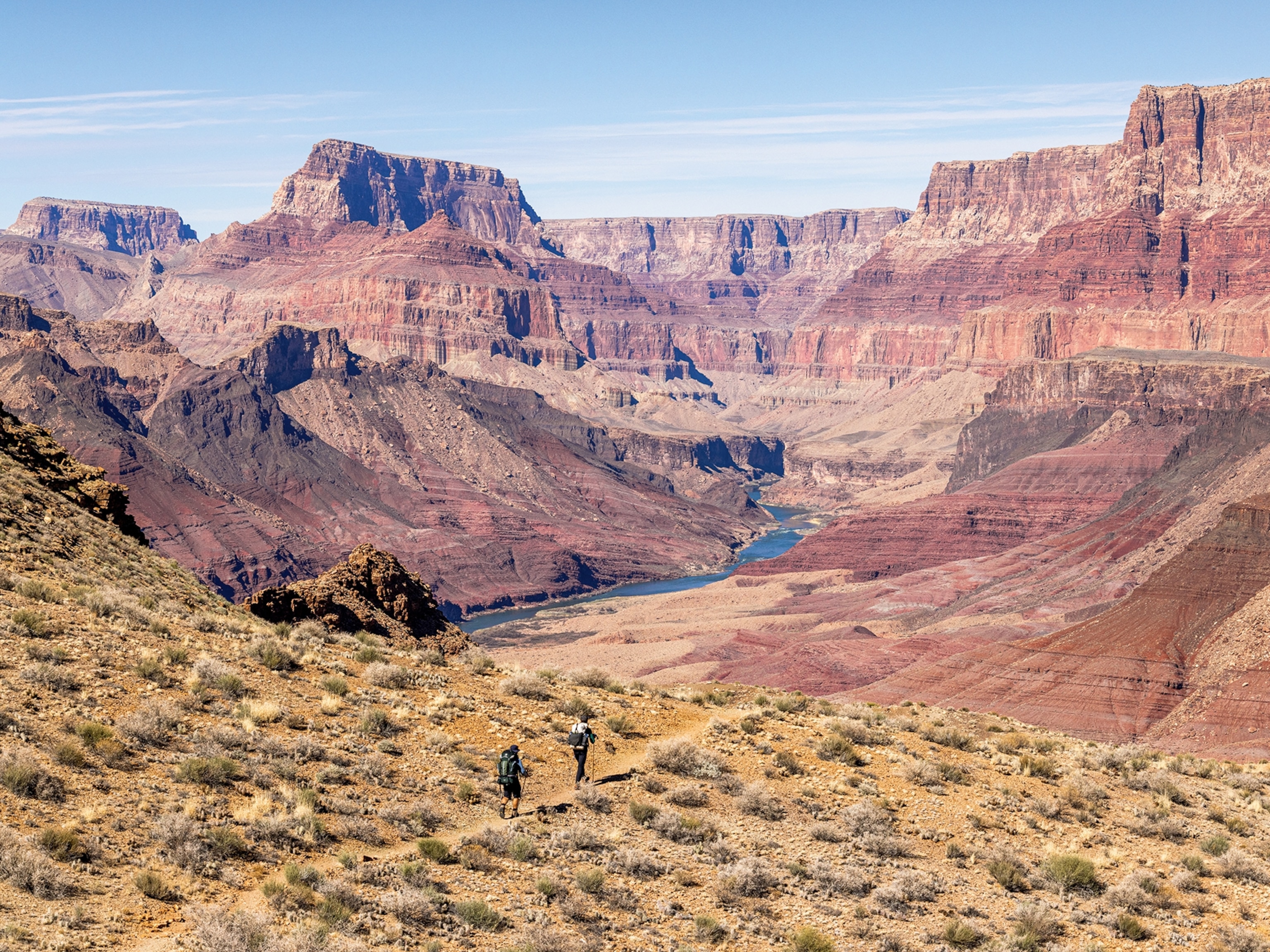Living on a Razor's Edge
Madagascar's labyrinth of stone
The lizard moved in frightened rhythms across the sun-blasted stone. A few quick steps, a turn of its boxy head. Then the stillness, the absolute zero, of a creature that sensed it was being hunted. All around, jagged spires and flutes rose like the towers of some Gothic cathedral, silent and empty. From the canyons below, a parrot flew squawking, breaking the trance. The lizard launched. Hery Rakotondravony's arm fired out. Moments later the young herpetologist uncurled his fingers.
"I think this is a new species."
In the few days we'd spent in Madagascar's Tsingy de Bemaraha national park and reserve, it was the second or third time he'd said this. On an island famous for its biodiversity (90 percent of the species here are endemic, found nowhere else on Earth), the 600-square-mile protected area is an island unto itself, a kind of biofortress, rugged, largely unexplored, and made nearly impenetrable by the massive limestone formation—the tsingy—running through it.
The great block of Jurassic stone has dissolved into a labyrinth of knife-edged towers, slot canyons, and wet caves that ward off humans while harboring other animals and plants. New species are frequently described from the isolated habitats within—a previously unknown coffee plant in 1996, a minuscule lemur in 2000, a bat in 2005, a frog two years later. Even larger animals have been found relatively recently, including a long-legged lemur discovered in 1990 but named, somewhat whimsically, only in 2005 after British comedian and conservation advocate John Cleese.
Steven Goodman, a biologist with the Field Museum in Chicago who has lived and worked in Madagascar for 20 years, describes the region as "a refuge within paradise," a place where a kind of biology more familiar a century ago can still be practiced and where simply walking around might put you face-to-face with a creature never seen before.
"You can move between valleys and find different things," Goodman said. "The tsingy formations of Madagascar are one of the places on Earth that hold extraordinary biological treasures. You just have to go in and look around."
Going in is the hard part. In March, at the end of the rainy season, just before the leaves browned and fell and winter dried the forest's thin streams, photographer Stephen Alvarez and I traveled into the park. Rakotondravony had agreed to guide us. It was his fourth trip to the Tsingy de Bemaraha; he is one of a handful of scientists who have gone there more than once.
We arrived in the capital, Antananarivo, just after the president had been overthrown in a coup. Violent protests flared every few days. Near the main square, soldiers lazed in transport trucks smoking and sending text messages, while on the university campus, students rallied beneath white banners, only to be driven back brutally. Tourism, a mainstay of the economy, had nearly collapsed. We left the city wondering if we'd be stopped. But soon, in the countryside, signs of the coup receded, the weight of it felt only at police checkpoints, where men in sandals cradled old AK-47s and asked where we were going.
It took nearly five days to reach the tsingy. Three days out, the route deteriorated into a deeply rutted dirt track that plunged through troughs of dark mud. Ferries carried us across rivers red with soil washed away in the aftermath of deforestation upstream. Villages shrank, cars vanished, the forest gradually thickened. Every few miles Rakotondravony leaped from our truck and ran into the bush. He'd return hauling a large snake or some unhappy lizard.
From a trailhead near a small village, we hiked into the forest. After several months of rain, the prolonged dry period was beginning, when many creatures estivate, waiting for the wet to return. We pitched tents near a clear stream, with rust-colored crabs flitting through the shallows. Our kitchen was set beneath an overhang in a cliff that rose through the canopy and, far above, split and cracked into the needles and fins and towers that give the place its name.
In Malagasy tsingy means "where one cannot walk barefoot," but we found that the landscape demanded much more than sturdy shoes. In several spots we tried exploring using rock-climbing gear. The tsingy chewed equipment and flesh with equal ease. At times it was like climbing amid giant skewers, the consequences of a fall suggested in the mutilated trunks of toppled trees below. In other places we explored the labyrinth on foot, following faint trails used by locals hunting honey or lemurs.
We squeezed through passages, our pack straps catching on fingers of stone. Finding handholds and footholds required concentration and testing, to see if the rock was too sharp or if it would hold weight. We stemmed narrow ravines and nervously straddled fins that were like fences topped with broken glass. The rock pierced our boots, leaving holes in the rubber. Usually we came over needle-sharp rises only to descend onto mats of thin soil covering yet more serrated rock. We'd carefully find our balance, then try to figure out what to do next.
We were lucky to cover half a mile a day—imagine trying to cross a city by climbing up each high-rise and then down the other side. Our slow progress made us easy targets for mosquitoes and wasps, and it underscored how difficult biological research here must be, dragging equipment and specimens through the terrain. But even covering far less ground than we'd hoped, we saw hundreds of animals and plants, more than we could recognize. In quieter moments it was possible to imagine a thousand places humans had never been, might never go.
One afternoon, returning from a hot, wet slog, vines along the trail tripped me up, and my right knee landed on a small rock. Back home in New England, where rocks come in rounder forms, I would have walked away with a bruise. But this was tsingy in miniature. A barb of limestone drove in nearly to the bone. It took two days to reach a hospital, where a nurse removed dirt from the wound. "Why were you doing this?" she asked, twisting a swab deep into the hole. She looked up. I was sweating. "I think you are a little dumb," she said. The tsingy is the perfect foil to human ambition.
The unusual formations here are a type of karst system, a landscape formed from porous limestone that was dissolved, scoured, and shaped by water. The exact processes that carved such an otherworldly stonescape are complex and rare; only a few similar karst formations exist outside Madagascar. Researchers believe that groundwater infiltrated the great limestone beds and began to dissolve them along joints and faults, creating caves and tunnels. The cavities grew, and eventually their roofs collapsed along the same joints, creating line-straight canyons called grikes, up to 400 feet deep and edged by spires of standing rock. Some grikes are so tight that a human traveler has difficulty passing through them; others are as wide as an avenue.
Observing the tsingy from the air, pilots have been reminded of the deep urban canyons of Manhattan, where an angular, chaotic skyline descends into a grid of streets and alleys, buildings and parks, everything underlain by a circulatory system of pipes, sewers, and train tunnels. The metaphor applies to the tsingy's inhabitants as well, because the formations have become like rows of high-rise apartment buildings, providing shelter to a different array of species at each level.
At the highest reaches there is little soil and no shelter from the sun. Here temperatures often bake above 90°F, and plant and animal life is restricted to creatures that can resist desiccation or move between the pinnacles and the canyons. Lemurs like the white-furred Decken's sifaka and the brown lemur use the tsingy as a kind of highway, leaping from spire to spire as they travel between fruit trees. In slots and crevices lizards chase insects through gardens of drought-tolerant xerophytes—euphorbias, aloes, spine-covered Pachypodium,and other plants that drop long, cablelike roots into the rock searching for water.
In the middle ranges of the high-rise, more niches appear in the canyon walls. Large fruit bats and dark vasa parrots roost here, their cackles and cries echoing through vaulted chambers and crumbling galleries. In shadier spots, bees anchor their nests in holes in the stone.
But it is in the humid grike bottoms, where water and soil collect, that the environment is richest. Here, among arrays of orchids and enormous tropical hardwoods, roams a bestiary: giant snails and fist-size, cricket-like insects, large chameleons, emerald green snakes, and red rats. The lemur-eating fossa—a wiry, thin-coated mammal with retractable claws that resembles something like a large cat—also patrols the tsingy. Finally, below the soil and the mud are caves and tunnel passages, the subway system where fish, crabs, insects, and other creatures live and commute, some without ever surfacing.
This walled city has sheltered its residents even as Madagascar's other ecosystems disintegrated. Scientists call it the perfect refuge.
The concept of "refuge" in biology signifies a safe zone, like a refugee camp, to which living things withdraw as their habitat shrinks. Once they become cloistered in refuges, animals and plants often become increasingly distinct from even their close relatives. Madagascar itself epitomizes this process, so unusual and removed are many of its species from their cousins on the African continent. Lemurs are the island's best known creatures. Their precursors once inhabited Africa but eventually went extinct there, leaving the continent to other primates, and today lemurs are found only in Madagascar. Free from the competition that likely drove them to extinction elsewhere, they evolved into richly varied forms, including now vanished species that were big as gorillas and the palm-size mouse lemur, the smallest living primate.
The tsingy also provides refuge on a smaller scale. Protected by walls of stone and wet by seasonal rains, the forest within is very different from the palm savanna curling around it to the east and the coastal areas that flank it to the west. It is a relict of another era, when forest corridors might have linked one side of the island with the other.
In recent millennia a natural drying trend fractured those corridors. Then came people. Since the first humans arrived in Madagascar some 2,300 years ago, nearly 90 percent of the island's original habitat has been destroyed, most of it harvested for timber or felled or burned to create room for crops and, more recently, cattle. As a result, many of the species that lived on the island are thought to have gone extinct.
In the west the tsingy walls in a large portion of forest. The stone serves as a barrier to human settlement and to cattle, which threaten wildlife habitat all across Africa with their plodding hooves and insatiable appetites. The tsingy also acts as a firebreak, shielding the forest from fires—both natural and those set by humans.
"Bemaraha has unusual animal and plant populations in part because the surrounding area has been changed, either by humans or by climate change," said Brian Fisher, curator of entomology at the California Academy of Sciences. "We've found it's much more diverse than we initially thought."
One sweltering morning Rakotondravony and I hiked into a tangled forest lining the floor of a grike. We paused at a large ant mound, red ants streaming from the earth. The air around us was damp, smelling of wet basements, and from within the canyon and the forest, a rhythm hung in that thick air, somewhere between heard and felt—the incessant buzzing of a billion insect wings.
Rakotondravony poked gently into the mound, looking for a renivitsika, or ant mother, a kind of snake that often lives within a colony's dark interior. We found no snakes, but scanning the area near the mound, Rakotondravony pointed to several plants, including palmlike trees with slender fronds. These, he explained, were another kind of guest that had made an unlikely home in the tsingy's narrow passages. They were a species common in the wet forests of eastern Madagascar but mostly absent from the much drier west. Only here, within the grikes, had the plants escaped the drying sun and roaming wildfires. The plants were just one example. There are certain frogs too, he said, whose nearest known relatives live hundreds of miles away in the eastern forests.
The difficult terrain creates still tinier refuges, where some creatures appear to have evolved in greater solitude, restricted to just a few canyons within the tsingy. John Cleese's lemur, a mouse lemur, and at least two of the pinkie-size dwarf chameleons—some of the world's smallest—illustrate this kind of micro-endemism, where evolution has tailor-fitted animals into tight niches.
Brian Fisher has traveled to the region three times to understand how these refuges formed and how they have shaped the life within them. Through DNA analysis, he is comparing ants from the tsingy region to ants in eastern Madagascar, hoping to pin down exactly when the ants, and the forests, became isolated. The results will provide clues to how animals evolve once they are shut off from other populations, and whether they respond to climate change only by retreating into refuges or by developing new traits as well. The answers, Fisher said, could have implications for the future, as human activity undermines habitats and the planet's climate changes.
Because it is remote and virtually impenetrable, development seems less likely to threaten the tsingy ecosystem than would a shift in regional weather. Lower humidity, less rainfall, increased acidity in the rain—any of these might harm the forests, even the stone itself.
"I wonder how long they could survive, these relict forests," Fisher mused. "They could disappear very shortly. It's a fortress, but it's vulnerable. The truth is we don't know very much. We're just getting a handle on this stuff."
On one of my last days in the tsingy, I stood on a lookout platform scanning an expanse of spires and pinnacles, the gray stone purpling in the late afternoon. The platform had been built several years earlier for tourists, but the tourists were no longer coming. The coup had frightened them off. It was bad news for the park; 50 percent of its budget comes from fees associated with tourism. An official told me that 2008 had been a good year, but 2009 wasn't looking promising. In April 2008, 147 visitors had come to Tsingy de Bemaraha; during the same month in 2009, after the coup, there had been 12. The official wasn't sure how he'd make up the difference or what effect it would have on the reserve, on employee salaries, on the development and education programs that give poor local people reasons to care about preservation. He smiled tiredly. "We will become creative."
Not far away a troop of sifakas leaped through the pinnacle tops, clearing deep canyons, landing on razors of rock. With their bright white fur, the lemurs look like polar creatures marooned in the tropics. They move through one of the world's most formidable landscapes as though physical laws mean nothing, as though such laws are arguments made by less agile creatures to explain away their own clumsiness.
The sifakas disappeared with the light. Parrots arced through the sky, passing large, silent bats. In the canyons below, the forest flattened into a gray smudge. We climbed down and headed for camp, playing our headlamps through the trees. Thousands of eyes glinted in the darkness, orange and green jewels, the eyes of nocturnal lemurs known only here, of geckos with skins as smooth and iridescent as a trout's, of large spiders and moths, their bodies thin as shadows. The night itself was becoming a refuge, a kind of temporary continent, enclosing the stone city and all its creatures, the named and the still nameless.

